Why Tbilisi Courtyards are Called Italian
Tbilisi, Georgia’s capital, is known for its narrow, cobbled streets, old buildings, and courtyards. While wandering old and new neighborhoods, you easily notice the dark, not-so-appealing passages that often hide verdant, bright, and wood-rich old Tbilisi courtyards.
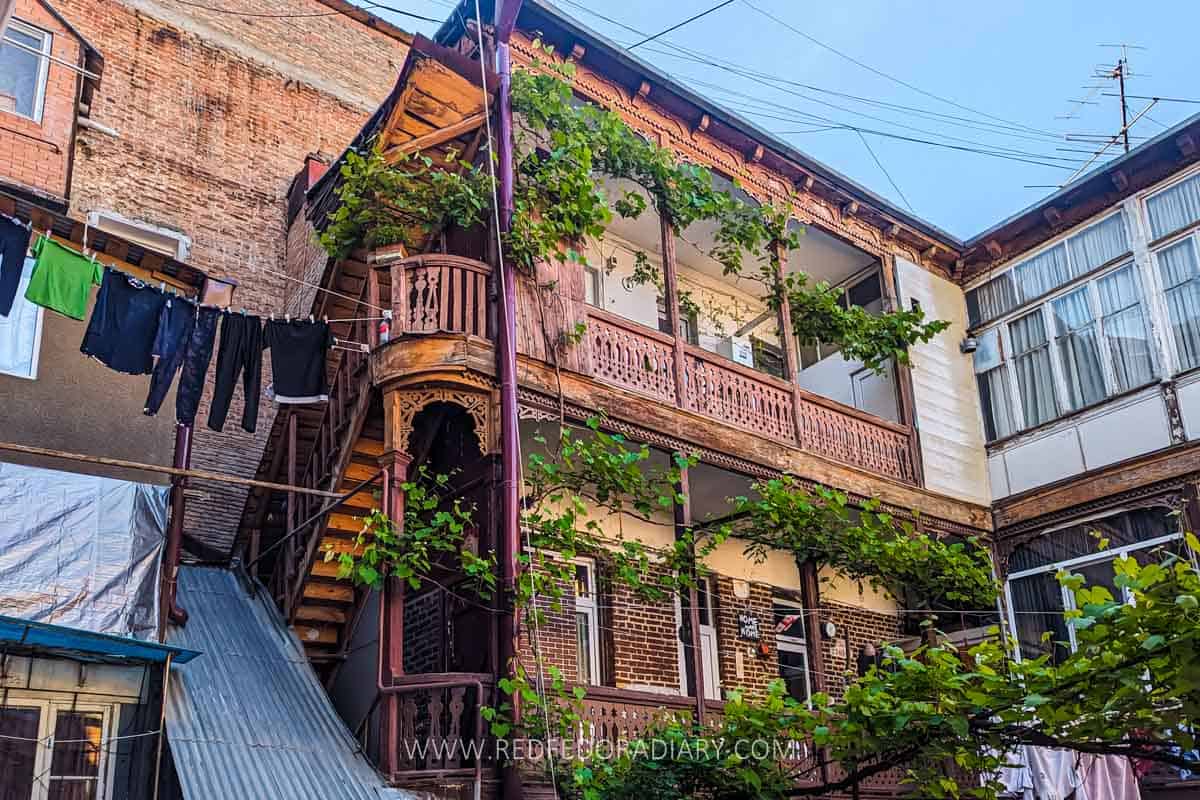
When you think of Tbilisi architecture, some of the first thoughts that come to mind are the iconic sulfur bath domes of Abanotubani, Chreli Abano that many mistaken for the mosque, Soviet leftovers (Bank of Georgia, Parliament, Ritual Palace, etc.), and wooden-carved balconies. But it’s Art Nouveau architecture, and the famously dubbed Italian courtyards might rarely make it onto the list.
But why do we call Tbilisi courtyards Italian when they’re very Georgian? Do they have something to do with Italy and its architecture? Well, there is obviously a short explanation, but it’s very important to look at history first rather than give a straightforward answer.
My Travel Essentials
Get an eVisa: Check if you need one at iVisa and fill out the form to get your eVisa easily.
Book a flight: I use Skyscanner or WayAway. The latter offers cashback with a Plus membership.
Airport transfers: Avoid the hassle of public transport and pre-book a transfer with Gotrip.
Reserve a hotel: My go-to platform for hotels or apartments is Booking.com.
Wine tours: Eat This! Tours offer premium wine tours. Use code RFD5 to get 5% OFF.
Hiking & culture tours: WT Georgia is the best for unique trips. Email them Red Fedora & get 10% OFF.
Find best-suited tours: For other tours, entrance tickets, and activities, I use Viator or Get Your Guide.
Rent a car: With affordable prices, Local Rent is one of the best car rental platforms.
Hire a driver: GoTrip is ideal for long-distance private transfers at very reasonable prices.
Debit card: I have Wise (an alternative to Revolut) for local money withdrawals without hidden fees or high exchange rates.
eSIM: To avoid heavy roaming fees, use Airalo or Saily. Compare prices and GB packages. Use BAIA2592 on Airalo and BAIAIR6152 on Saily to get 3 USD on both.
Travel insurance: SafetyWing covers health insurance and has add-ons for adventure sports and electronics theft coverage.
The Begining of Tbilisi courtyards
After our king, Erekle II, signed the Treaty of Giorgievsk in 1783, the Russian Empire became Georgia’s protector from all the invasions we’ve been part of for centuries. This treaty changed many things and brought new advancements to the capital.
However, it also meant that in 1801, Georgia became the Governorate of the Russian Empire. At the beginning of the 19th century, Tbilisi, burnt down by Agha Mohammad Khan Qajar of Iran one last time, evolved into the administrative center of the Caucasus for the Empire.

Therefore, based on the decision of that time’s government to turn the capital into a European city, in the late 19th and early 20th centuries, Tbilisi started to expand beyond its city walls and develop new neighborhoods with buildings that resembled European styles.
Districts with neo-classicist and sophisticated buildings started to appear next to the older quarters, typically following the trend of French balcony styles. However, this didn’t quite correspond to the traditions and wishes of most Georgians, as these new facades were made to enforce and align with the new urban plan and look similar to other cities in the Russian Empire. Thus, there was no space for the informal lifestyle of the Georgians.
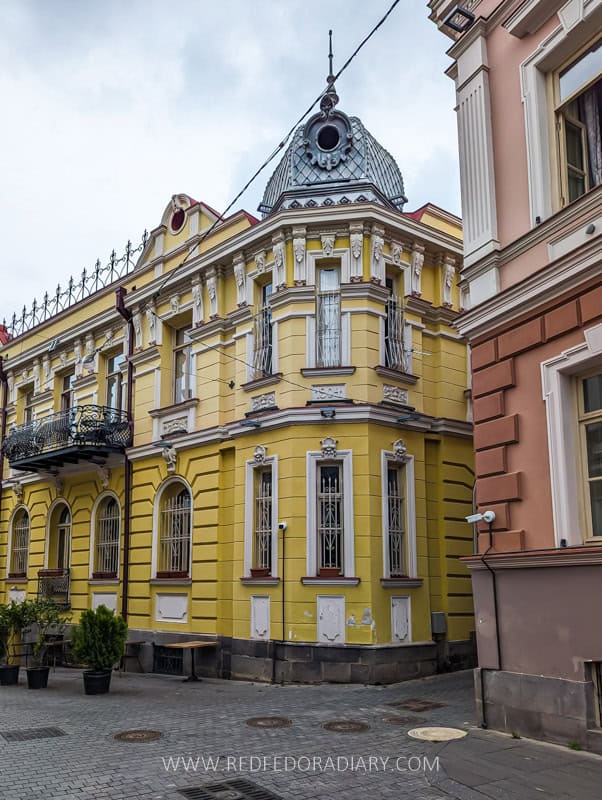
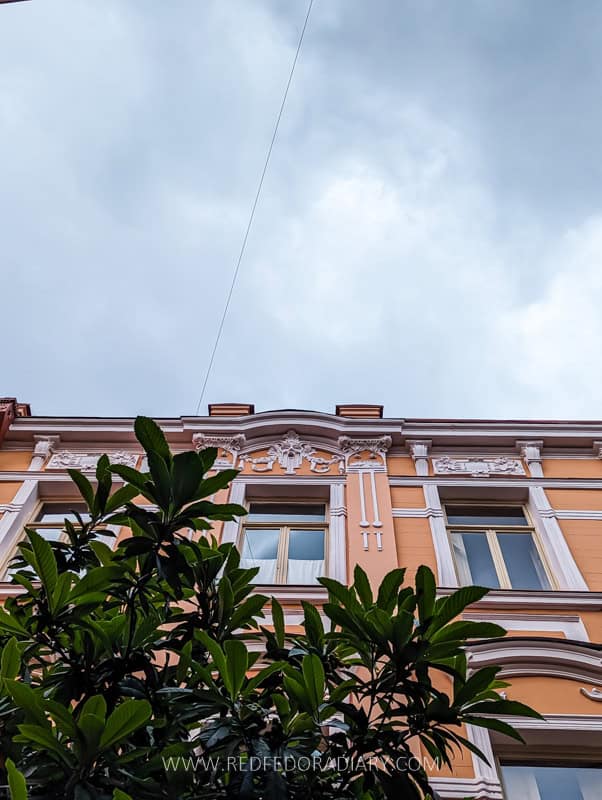
As a result, the layout of the buildings has changed. When wealthy merchants and businessmen started to build gorgeous buildings inspired by famous European architectural styles, the open courtyards you see in the Abanotubani became hidden behind the European-style facades of the Sololaki, Mtatsminda, and Chughureti neighborhoods, creating a new cultural phenomenon, yet preserving the charm of old Tbilisi’s architecture.
The architecture of the wooden-carved balconies moved inside the yards. Sometimes, dull buildings from the outside were utterly different from the inside, hiding unique, open, lace-like balconies that formed a more tranquil environment for its residents.
Those Tbilisi courtyards typically had a small garden, leafy retread, and/or a fountain. They might have an unexpected structure pattern and feature arches, staircases of different shapes (spiral ones are widespread), so-called shushabandi (a glass room), and wooden-carved balconies, to name a few.
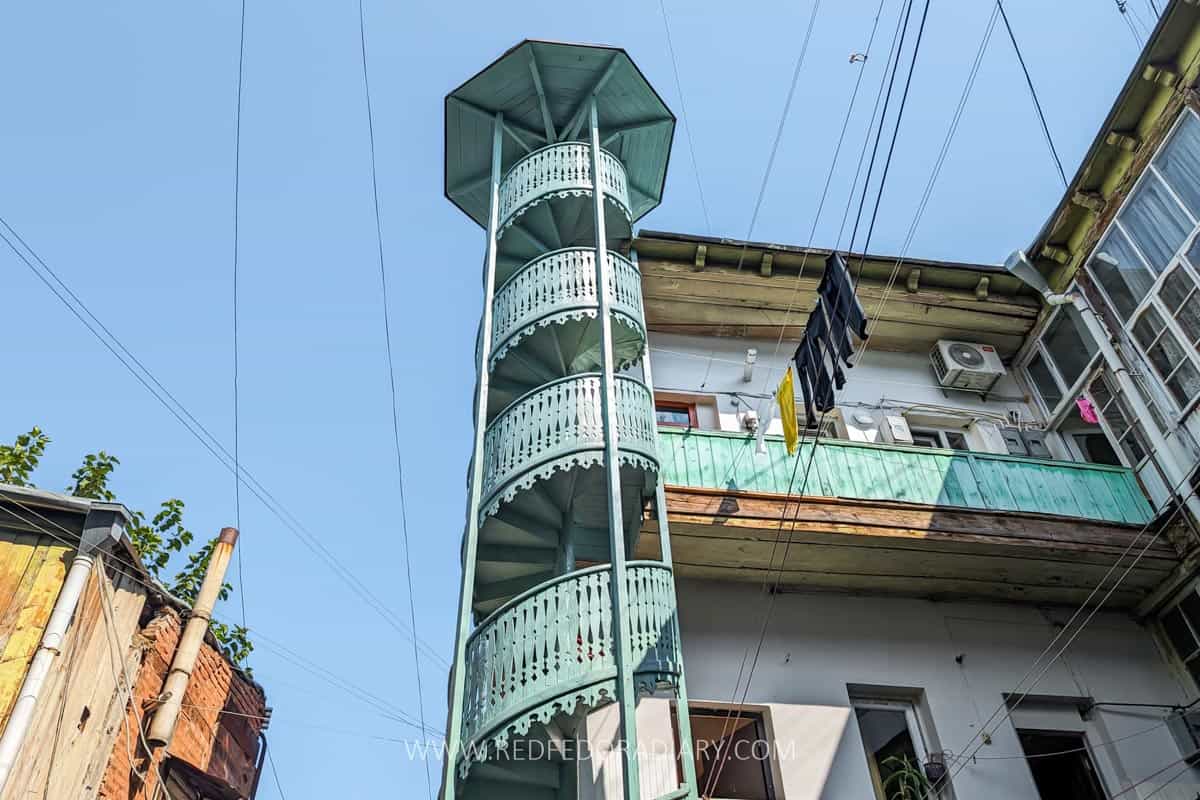
This shift of the layout has given Tbilisi its unique architecture—a building with a luxurious and static facade and a more tranquil, intimate, and personal courtyard, which obviously distinguished it from the other European-like cities of the Russian Empire.
I talk about this in my Art Nouveau tours, apart from telling you urban stories of the owners that you can’t read in any guidebook and take you to some of the most lavishly decorated mansions.
Tbilisi courtyards during the Communist era
When Georgia became part of the Soviet Union in 1922, things drastically changed. Sadly, those wealthy merchants, thanks to whom we have these impressive mansions, were evicted from their residential quarters; houses were nationalized and turned into communal spaces for Tbilisi residents.
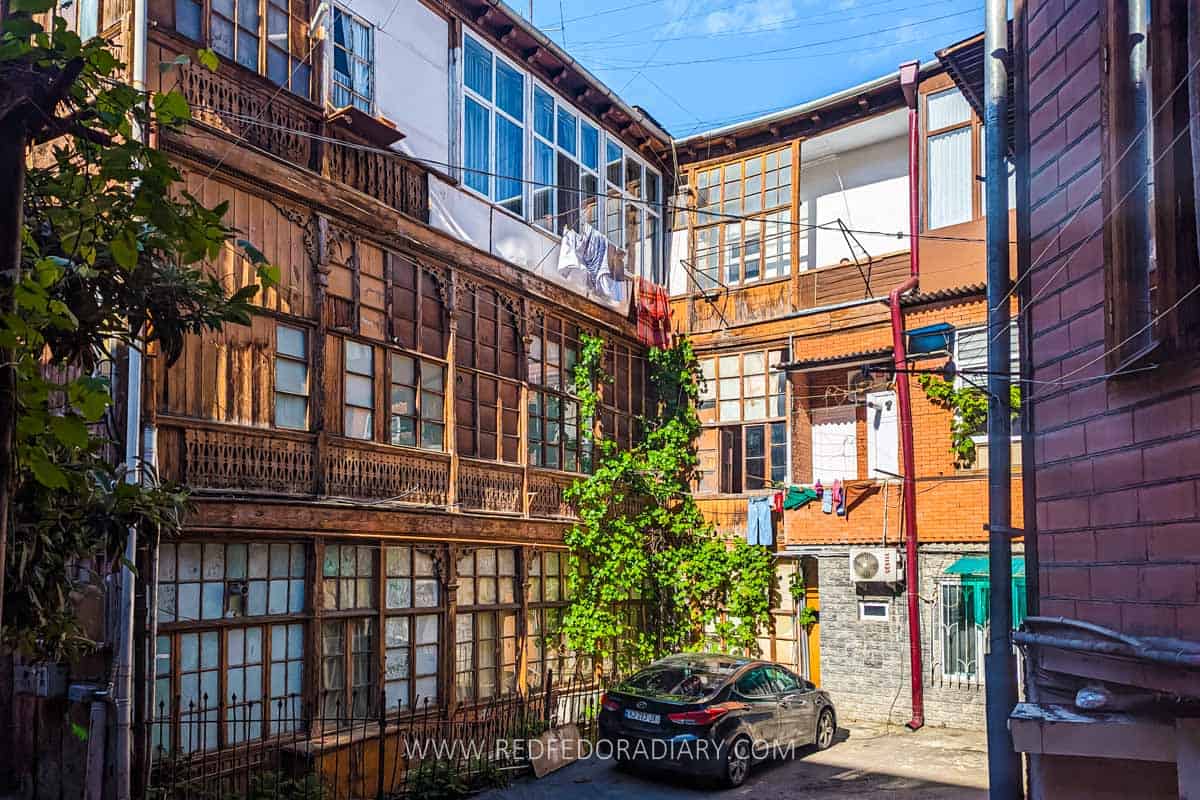
Depending on the size of the mansions, the Soviet government created different apartments and gave them away to citizens of various ethnic, religious, professional, and social statuses. Therefore, these yards became a melting pot of multicultural Tbilisi, where Georgians, Armenians, Azeris, Russians, Jews, Greeks, etc., lived more or less harmoniously.
The new way of living in these yards became integral to old Tbilisi’s social lifestyle and strengthened the sense of a “neighbor,” someone you could rely on. You could ask for a cup of sugar if you run out while baking a cake, gossip about the neighborhood, do things together, share both happy and sad news, play backgammon, and help each other when needed.
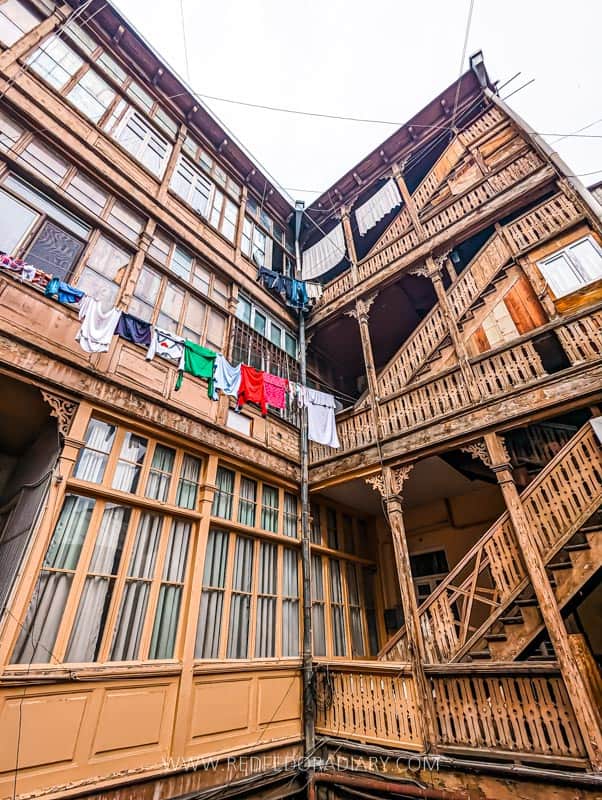
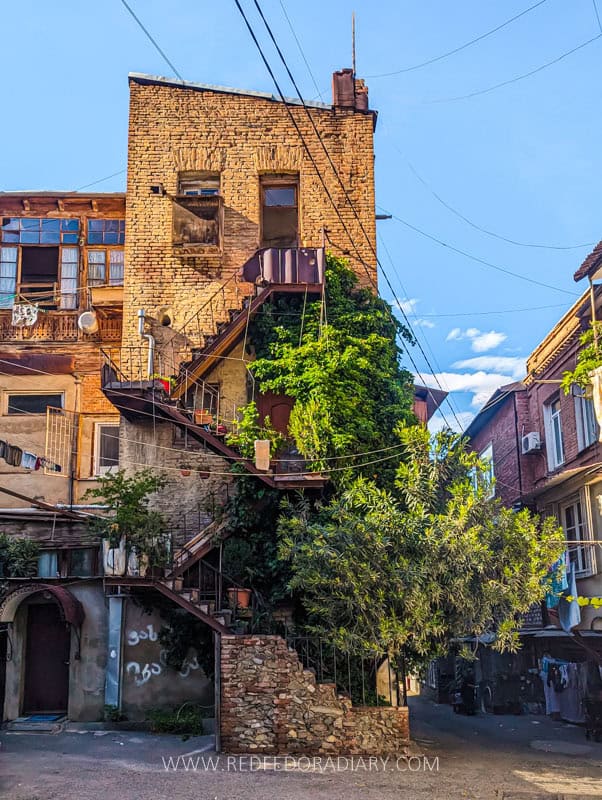
It was like one big family sharing one basement, bathroom, a well, tone bread oven, and sink, for instance. In the evenings, it was common to have an impromptu big Supra inside the yard where each family would bring food. Even passersby were invited to join the dinner. Because of this, Tbilisian courtyards were lively, often very noisy, but extremely friendly.
Where does the Italian courtyard nickname come from?
The reason Tbilisi courtyards are called ‘Italian’ has nothing to do with the architectural style or social and cultural resemblances.
In Soviet times, Italian neo-realist movies starring Marcello Mastroianni and Sophie Lauren were extremely popular in Tbilisi. These movies, set in southern Italy’s lively and noisy cities, portrayed the informal Italian lifestyle of crowded courtyards, open-air retreats, and balconies.
Finding similarities between their own culture and living style to those shown in Italian movies, Tbilisians started calling Tbilisi courtyards Italian.
And even though southern Italian cities don’t resemble Tbilisi at all, especially with the architecture, the moniker stuck among the locals, and many still call them Italian courtyards rather than Tbilisian.
Today, sadly, these yards are a symbol of the past—they’re not as lively and noisy as they used to be. The modern, fast life and digital era did leave their mark on the atmosphere of Tbilisi courtyards.
